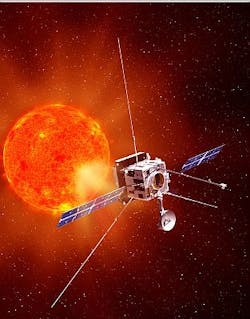Naval Research Lab imager heads for the sun
An optical telescope under development at theNaval Research Laboratory (NRL; Washington, DC, USA) is to be launched into space as part of the European Space Agency (ESA)’s Solar Orbiter mission to study our sun.
Using the so-called SoloHI instrument, which sports a lightweight camera system, the Solar Orbiter spacecraft will study the sun from a closer distance than any mission has ever done before. It is planned to be launched in 2017 from Cape Canaveral Air Force Station in Florida, aboard an expendable launch vehicle.
Measurements from the camera -- which uses a 4k x 4k-pixel CMOS sensor -- will allow scientists to identifycoronal mass ejections or CMEs, which are space weather events. These solar eruptions can travel from 60 to 2000 miles per second, have masses greater than a few billion tons, and can affect electromagnetic fields on Earth impacting power lines, satellite communications, and cell phone service.
The Solar Orbiter mission will include ten instruments, both remote sensing and in situ, tostudy the sun and solar wind. It will orbit the sun every 150 days, between roughly the orbits of Mercury and Venus.
-- By Dave Wilson, Senior Editor,Vision Systems Design
